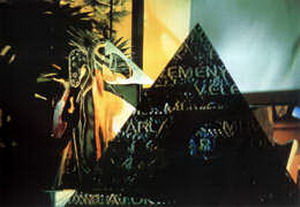Content:
Introduction: Fishing for floating fish can be an exhilarating and challenging endeavor. Floating fish, such as sunfish, carp, and some species of bass, often inhabit shallow waters and can be quite elusive. To catch these skittish creatures, anglers must employ specific techniques and strategies. In this article, we will delve into the essential techniques for mastering the art of floating fish fishing.
Understanding Floating Fish Behavior: Before diving into the techniques, it's crucial to understand the behavior of floating fish. These fish are often found in shallow waters, near vegetation, or in areas with a lot of movement. They are highly sensitive to disturbances and can be easily spooked. By understanding their habits, you can better position yourself and your equipment to increase your chances of success.
Selecting the Right Equipment: The equipment you choose can significantly impact your success in catching floating fish. Here are some key components to consider:
a. Rod and Reel: Opt for a lightweight, flexible rod with a fast action. A spinning reel is often recommended for its ease of use and sensitivity. The line should be light and strong enough to handle the fish's size.
b. Line: Use a monofilament line with a thickness that matches the size of the fish you're targeting. For instance, a 4- to 6-pound test line is suitable for most floating fish.
c. Lures and Baits: Floating fish are attracted to a variety of lures and baits. Live bait, such as worms or minnows, can be highly effective. Artificial lures like small spinners, jigs, or soft plastics can also entice these fish.
Choosing the Right Location: To catch floating fish, you need to find them. Here are some tips for selecting the right location:
a. Look for areas with a lot of vegetation, as floating fish often feed on insects and small creatures that thrive in such environments.
b. Focus on shallow waters, as floating fish are typically found in depths of less than 10 feet.
c. Pay attention to areas with a lot of movement, such as where water currents meet or near the edges of reeds and lily pads.
Presenting Your Bait or Lure: Once you've found a suitable location, it's time to present your bait or lure effectively. Here are some techniques to consider:
a. Cast your line gently and avoid making loud noises, as floating fish are easily spooked.
b. Work your bait or lure slowly and methodically. Floating fish often feed on insects or small creatures that move slowly, so mimicking this motion can be effective.
c. Experiment with different retrieves, such as a slow roll, a twitch, or a stop-and-go motion. This can help you find the most effective presentation for the fish you're targeting.

Patience and Practice: Catching floating fish requires patience and practice. These fish can be quite elusive, and it may take time to master the techniques. Keep experimenting with different lures, baits, and retrieves until you find what works best for the fish you're targeting.
Setting the Hook: When a floating fish takes your bait or lure, it's essential to set the hook quickly and efficiently. Here's how to do it:
a. As soon as you feel a tug on your line, set the hook by quickly jerking the rod tip toward the fish.
b. If the fish pulls away, don't panic. Wait for it to come back to the boat, then set the hook again.
c. Keep your line tight and maintain pressure on the fish to ensure a successful catch.
Conclusion: Fishing for floating fish can be a rewarding and enjoyable experience with the right techniques and equipment. By understanding the behavior of these fish, selecting the appropriate gear, and employing effective presentation methods, you can increase your chances of success. Remember to practice patience and persistence, and you'll soon become a master of floating fish fishing.












